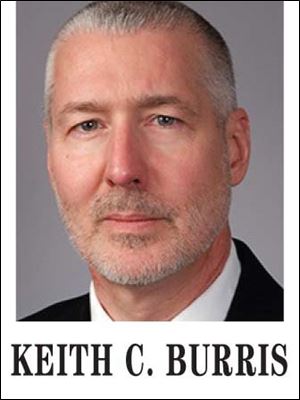
COMMENTARY
Breakthrough for autism, but access an issue
3/21/2014
Forty years ago, autism was a word that did little but frighten and confuse people.
It still scares people, and diagnosis and treatment are both enormously complex.
But as a society, we are paying more attention and have a better understanding of what we do not know.
We also have a cadre of medical and academic professionals who use science to do the vital hands-on and clinical work young people, and young adults, diagnosed with autism need.
I met some of these professionals at the Great Lakes Collaborative for Autism, a few days ago — six women who work there as administrators, therapists, and teachers. They are all caregivers, in the absolute sense of both words.
The collaborative is based on a very simple and sound idea — one that needs to be applied to other areas of service in Toledo, like youth, housing, and treating addictions. The notion is to pool resources and establish one-stop shopping.
The collaborative’s executive director, Catina Harding, says there was a palpable need for this sort of unification. There is also a unifying therapeutic concept: Here we do what works, whether it is behaviorally based or occupational-therapy based. Ideology is set aside for what works for the individual child.
They do many things at the collaborative, which is at 2040 W. Central Ave. and needs some major signage. (And a shout-out to a generous donor for that sign). For one thing, they raise awareness and connect people with needs to programs. That’s the coordinating piece. But they also run a school — the ProMedica Toledo Children’s Hospital Autism Early Learning Program. This begins with very young children, as early as age 2, because the earlier a child is diagnosed, the more life skills he or she can acquire.
The collaborative also runs an after-school program for older kids with autism called the Self Reliance Center, founded and still run by Sandy Langford. She had long dreamed of filling this need.
The collaborative even loans space to a program called iTaalk, which helps families acquire iPads for kids with autism. That small, feisty, and noble charitable foundation began in Toledo.
Every once in a while, in my job, you get blown away. I am blown away by the moral force of a Thomas Gumbleton or Baldemar Velasquez. Many years ago, on a fellowship, I met some scientists at Johns Hopkins. I had simply never before met people that bright. I have never encountered a small band of people doing so much good for other human beings as the people at the Great Lakes Collaborative for Autism.
Melissa Twarek, the program manager at the early learning program, has worked in Chicago and Washington, and she believes we have a first-rate facility and program here.
But there is an issue of access and equity. Many Toledoans do not know it is there.
And many cannot afford it.
These programs are intensive, often one-on-one, and expensive. Insurance often does not cover the treatment.
Yet more and more children need it. Autism is increasing, especially among boys. About one in 88 American kids is said to be “on the spectrum.”
Ohio needs a mandate for autism treatment coverage — a mandate our governor strongly favors.
He says it is a humanitarian issue. He’s right.
Keith C. Burris is a columnist for The Blade.
Contact him at: kburris@theblade.com or 419-724-6266.